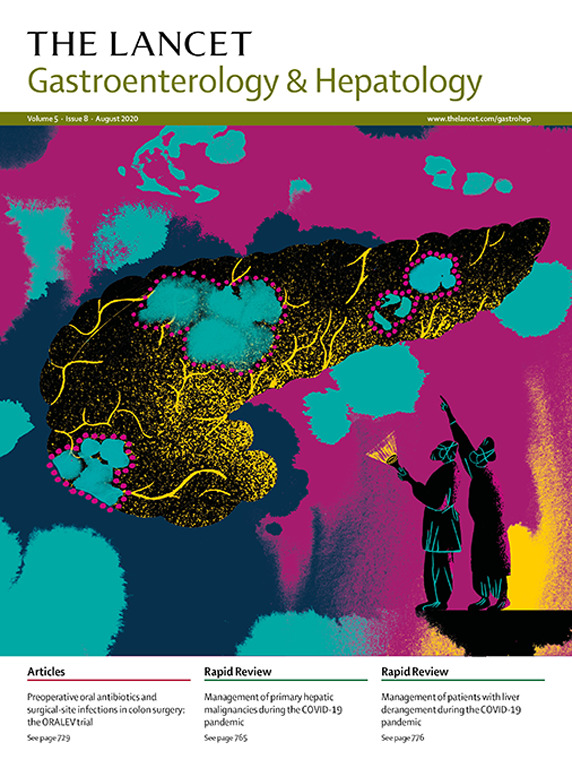Emerging evidence-based role for external-beam radiation therapy in hepatocellular carcinoma
IF 30.9
1区 医学
Q1 GASTROENTEROLOGY & HEPATOLOGY
引用次数: 0
Abstract
The primary curative therapies for hepatocellular carcinoma are resection or liver transplantation. For patients requiring downstaging or who are unresectable at presentation, the landscape of local treatment options has vastly changed over the past decades. This change is partly due to the paucity of high-level evidence to guide the selection of liver-directed therapies, where physician preference and treatment patterns have historically resulted in relegating external-beam radiation therapy (EBRT) to a secondary option in the treatment of hepatocellular carcinoma in cases where arterially directed therapies or thermal ablations were not possible. However, technology advancements have substantially improved the ability to treat liver malignancies with high doses of radiation therapy and to minimise doses to uninvolved hepatic parenchyma and other nearby organs. These advancements have enabled safe treatment of hepatocellular carcinoma with EBRT, with low risk of toxicity. Recent randomised trials support the role of EBRT in the treatment of hepatocellular carcinoma from early to advanced stages. These trials identified that EBRT improved several key patient-centred outcomes, including overall survival when using stereotactic body radiotherapy and sorafenib compared with sorafenib alone in unresectable hepatocellular carcinoma, recurrence-free survival with the use of adjuvant EBRT in select patients after hepatocellular carcinoma resection, and quality of life for patients with painful hepatocellular carcinoma masses treated with palliative EBRT. With emerging high-quality evidence, hepatocellular carcinoma therapeutic guidelines should include the growing role of EBRT in improving the quality and quantity of life for patients with liver cancer.求助全文
约1分钟内获得全文
求助全文
来源期刊

Lancet Gastroenterology & Hepatology
Medicine-Hepatology
CiteScore
50.30
自引率
1.10%
发文量
0
期刊介绍:
The Lancet Gastroenterology & Hepatology is an authoritative forum for key opinion leaders across medicine, government, and health systems to influence clinical practice, explore global policy, and inform constructive, positive change worldwide.
The Lancet Gastroenterology & Hepatology publishes papers that reflect the rich variety of ongoing clinical research in these fields, especially in the areas of inflammatory bowel diseases, NAFLD and NASH, functional gastrointestinal disorders, digestive cancers, and viral hepatitis.
 求助内容:
求助内容: 应助结果提醒方式:
应助结果提醒方式:


